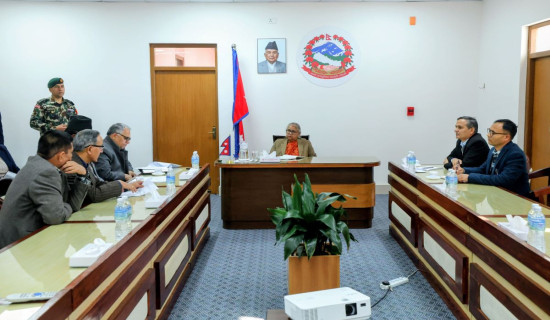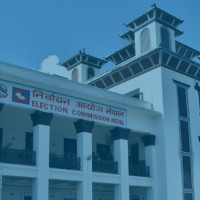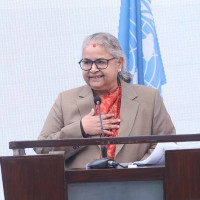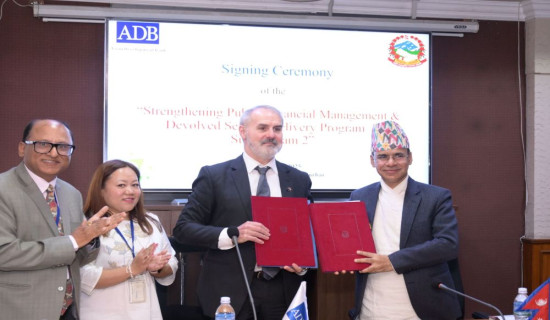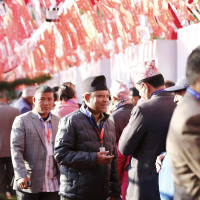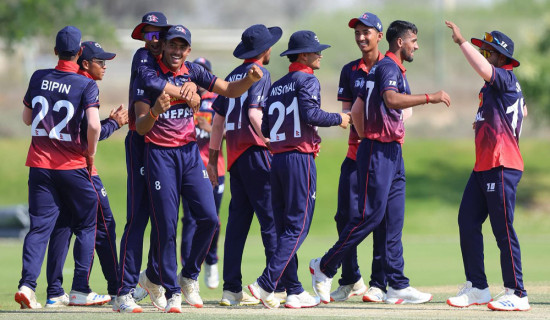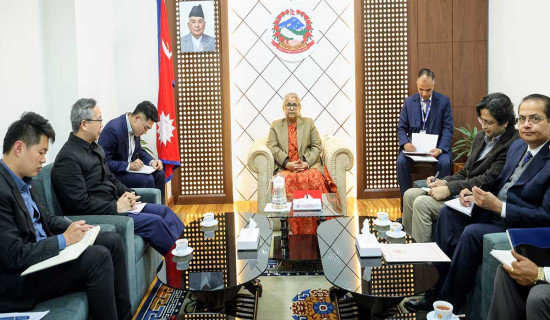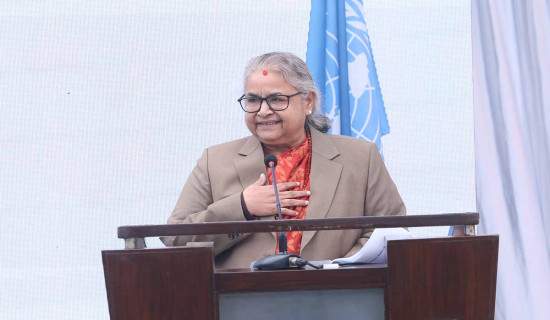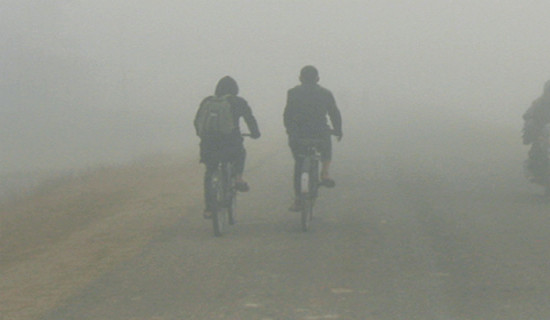- Thursday, 18 December 2025
Learning From Relocation Of Homeless Families
Pallav Ranjan
“We had visitors from the Bishnumati Riverside area in the afternoon. A road was going through their area. A three-day eviction notice had been issued to the landless settlers.” Lajana Manadhar, founder of Lumanti Support Group for Shelter, remembers those fateful days 17 years ago.
“Shocked and determined not to let down the community, I met the mayor, the secretary at the ministry and other key players pleading that this would be inhumane.”
Husband and wife, Krishna and Chunu Pariyar, remember, “We had six children. We had very little, our homes were made of tin and plastic. People would come to defecate near our homes in the mornings and when we asked them not to, they would shout at us. Yet it was home to us. We did not have anywhere to go.”
Thankfully, the authorities listened to the pleas and the eviction was postponed. Yet, just postponing the eviction was not a solution. Lumanti had been working on urban settlement issues for 15 years.

A permanent solution that would work out for all the parties concerned was needed. The families needed a home, the municipality needed the road, the government needed rules and regulations adhered to. Lumanti reached out to their network and explored possible options and opportunities. The Asian Coalition for Housing Rights (ACHR), Slum Dwellers International, community leaders and the municipal team responded.
ACHR general secretary Somsook Boonyabancha and Slum Dwellers International chairperson Jockin Arputham came to Kathmandu.
In a meeting with the then Mayor Keshav Sthapit, they offered to match any fund that was provided by the municipality to support a solution. The mayor was very receptive to the idea and the Urban Community Support Fund was established with the mayor as the chairperson, Lumanti as its secretariat and the representation of slum dwellers, the private sector, and the civil society on the board.
“When a bank statement arrived showing an eight million rupee deposit by Kathmandu Municipality, we were in shock. We were unbelieving! We looked at the bank statement so many times, we did not know what to do. Scream? Laugh? Hug each other? We were dancing,” Lajana Manandhar recalls. ACHR and Slum Dwellers International promptly matched the funds and the first planned urban relocation project in Nepal was established.
Krishna Pariyar was elected the first chairperson of what would be the Naya Basti Tol settlement, his immediate task was to find an appropriate location where resettlement could take place. “The money was there, but land prices within the city core were very high and as daily wage and seasonal workers, we could not go too far away. Access to public transportation was a concern.”
After months of searching, Lajana and her team found out that a plot of land in Kirtipur was being auctioned by a bank. “It was a few minutes walk away from bus transit. We talked with the stakeholders and gaining everyone’s support, we bid three million rupees for the land.”
People’s representative of Kirtipur Municipality, Gyan Bajra Maharjan, says, “The resettlement project won the bid for the six ropanis of land in our municipality. Legalities, logistics, and opportunities were explored.
The land was registered as community property. Only the houses built on that land could be owned by the residents but not the land itself. This would reduce the chance of resale and return to difficult circumstances once money from the sale ran out. Houses would be paid for by the owners themselves over the years through regular installment payments.”
Architects were assigned and house and community designs were explored in a participatory way. A life-size model of a sample home was created using bamboo and cloth. Housing plots were distributed through a lottery system to avoid unfair distribution of locations.
A contractor was selected. When construction started, the soon to be residents monitored progress and quality of raw material and labor.
Lajana Manadhar continues, “Essential amenities had to be set up including road access to each house, electricity lines for each house, water connections [most homes in the Kathmandu Valley had gone for almost two decades without adequate or no water supply], sewage, and more.
The community was to become an example on how rainwater harvesting could be achieved successfully, community groundwater sources such as wells and springs were managed and groundwater extracted through boring technology.
Extracted groundwater was replenished by feeding water back into the ground during the monsoon. These were important interventions as it was only 15 years later that the municipality could provide drinking water to every household in the neighborhood.
“Krishna Pariyar, Dilip Maharjan, and Mini Bahadur Biswakarma went many times to the Nepal Electricity Authority to connect the community to the municipal grid. Sewage system was not functioning in the area so a reed based wastewater treatment system was set up and became an example nationwide. Another grant was sought and the wastewater treatment system revisited to make improvements. Septic tanks were constructed to reduce stress.”
Sagar Manadhar, a beneficiary, comments, “Our health and lives were at risk when we lived in the slums. My wife and son passed away due to disease. Chunu and Krishna also lost their daughter Bhagbati to illness. This new neighborhood was clean, there was no stink, we had proper roofs, bedrooms, living rooms, kitchens, and toilets.”
The community was constructed taking the long term in mind. “When the earthquake in 2015 took away almost 10,000 lives in Nepal, not one house in our community was damaged. And when Covid struck, we had space to stay safe and rooms to isolate in,” Chunu adds.
Gyan recalls inter-community conflict, integration of diverse cultures, savings and loans systems, setting up of a cooperative, encouragement of enterprise, education, and social and economic development in the new community.
“I truly believe that we have a piece of Heaven here,” Krishna says. “I am so grateful.” The health-post is nearby. We have good schools and Nepal’s most important Tribhuvan University is within walking distance for our children.

My son has become a science and math teacher. My next door neighbor’s daughter works for a not for profit organization.
Sagar’s son paints houses. Sita didi has been elected a people’s representative by the Kirtipur community. Surya Man Napit has a shop, some of us are tailors, some blacksmiths, some have
fresh houses to sell meat. We are productive members of Kirtipur. We are blessed, the gods have smiled upon us.”
Gyan believes that this settlement set an example to the nation. “Our municipality learned how to settle the homeless, plan residential areas, have people pay for their own housing, and how buildings could be made disaster-safe.
Managing community property through current laws and regulations, handling taxation, respecting people and avoiding systemic discrimination, preparation of five-year guidelines, renovation of traditional public buildings such as falchas and patis are other areas we learned about. I continue to visit the community on a regular basis and am proud of what all of us have achieved together.”
Seventeen years have gone, the original owners and their families still live in these houses. Transformative Cities – in collaboration with UCLG Committee, Friends of Earth International, Ecolise, Ripess, Habitat International Coalition, Global Platform for the Rights to the City and Transitional Institutes – has recognized and shortlisted this effort in Nepal for potential global recognition.
Lajana concludes, “This is possible through cooperation and partnership. Kirtipur Municipality, Kathmandu Municipality, different federations, civil society organizations, UN Habitant, Homeless International, ActionAid, WaterAid, and other institutions and individuals came together.
Now, everyone in this community has work. No one has issues related to livelihood. The children are healthier, families are better educated and are more employable. The quality of life is a lot better. It was a lot of work, but things worked out for the better.”
(Pallav Ranjan, who has several books on art and literature to his credit, runs Spiny Babbler Knowledge Centre. He says he interacted with multiple concerned stakeholders to prepare this article.)
How did you feel after reading this news?



